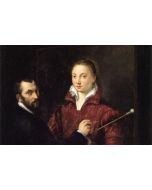20th century design: modern and post-modern
Time: 14:30 - 16:30
Location: Keeley Street
- Course Code: VB933
- Dates: 08/06/24 - 29/06/24
- Time: 14:30 - 16:30
- Taught: Sat, Daytime
- Duration: 4 sessions (over 4 weeks)
- Location: Keeley Street
- Tutor: Rachel Sanders
Course Code: VB933
Duration: 4 sessions (over 4 weeks)
Please note: We offer a wide variety of financial support to make courses affordable. Just visit our online Help Centre for more information on a range of topics including fees, online learning and FAQs.
What is the course about?
The course will study key European Early Modernist design movements that emerged as a response to the
devastation of WW1. We will consider the contribution of each to the establishment of a dominant international
design aesthetic in the mid-twentieth century, charting its design principles in relation to iconic products. And we will
explore its demise under the aesthetic and theoretical critiques of the post-modernist movements.
What will we cover?
- Russian Constructivism
- De Stijl, the Bauhaus, Purism and Scandinavian Modern
- International Modernism
- The materials, visual characteristics and design principles of Modernism, e.g. standardisation and longevity.
- Early post-modernist design movements e.g. Pop, Psychedelia, Punk and the Memphis Group.
What will I achieve?
By the end of this course you should be able to...
- Describe the historic context, motivations and rationale of the European Early Modernist design movements.
- Identify and describe key visual characteristics and design principles of modernist and post-modernist design
movements.
- Analyse the development, and the successes and failings of International Modernism.
- Evaluate the relationship between modernist and post-modernist design movements.
What level is the course and do I need any particular skills?
The course is aimed at beginners; you will need no prior knowledge or specialist skills to participate.
You should be able to follow simple written and verbal instructions, demonstrations, hand-outs and health and safety information, and will be invited to take part in group discussion.
How will I be taught, and will there be any work outside the class?
You will be taught with workshops, short lectures, practical exercises, tutorials and handouts. You may wish to do some additional reading, but this is optional.
Are there any other costs? Is there anything I need to bring?
You might wish to bring a notebook. You might wish to buy some of the books on any reading list given out in class.
When I've finished, what course can I do next?
London architecture: post-modernism
Looking at design: Arts and Crafts to Art Deco.
Dr Rachel Sanders received her MA and PhD in History of Art from University College, London. She has taught at a number of institutions and currently lectures on the history of art and design at City Lit and Oxford Brookes University. Her research interest is early twentieth-century American political paintings and cartoons. She has published a number of articles on her research specialism and is currently writing a book on New Masses magazine.
Please note: We reserve the right to change our tutors from those advertised. This happens rarely, but if it does, we are unable to refund fees due to this. Our tutors may have different teaching styles; however we guarantee a consistent quality of teaching in all our courses.
